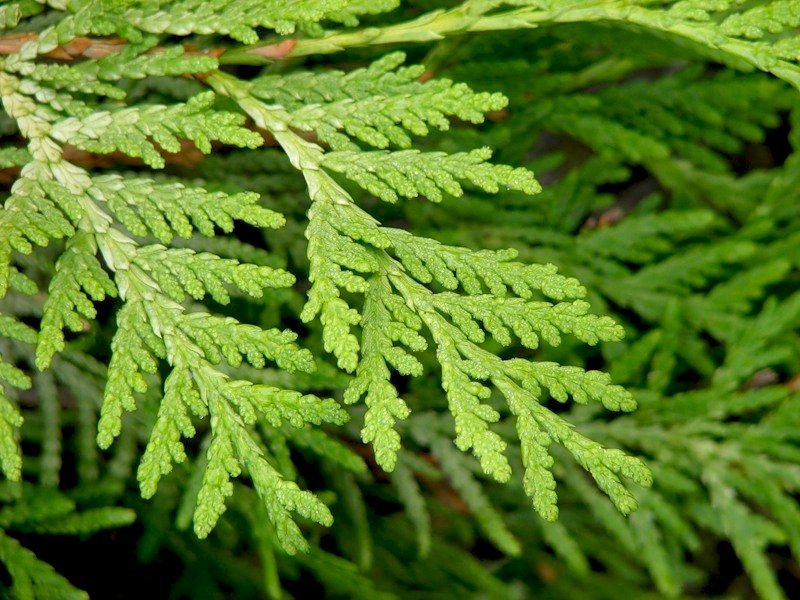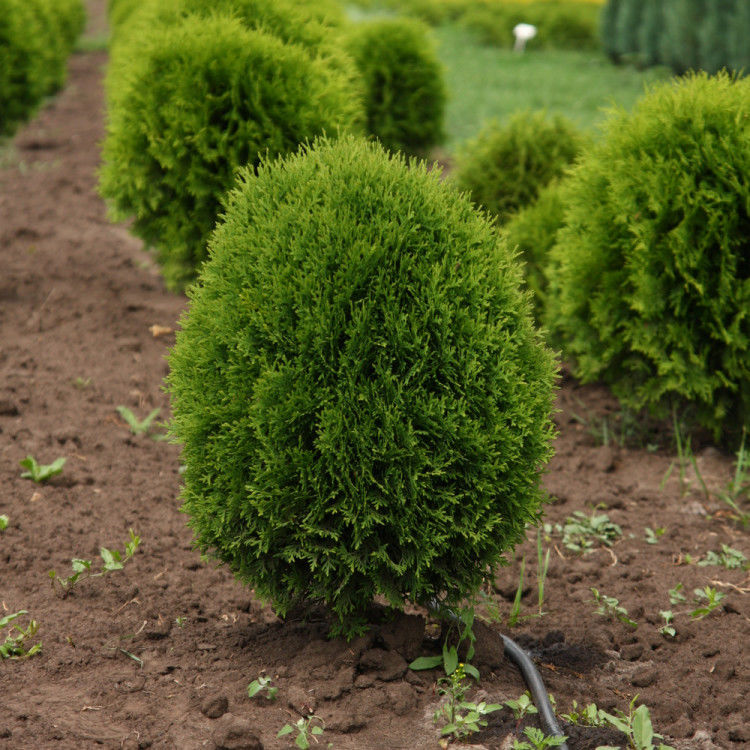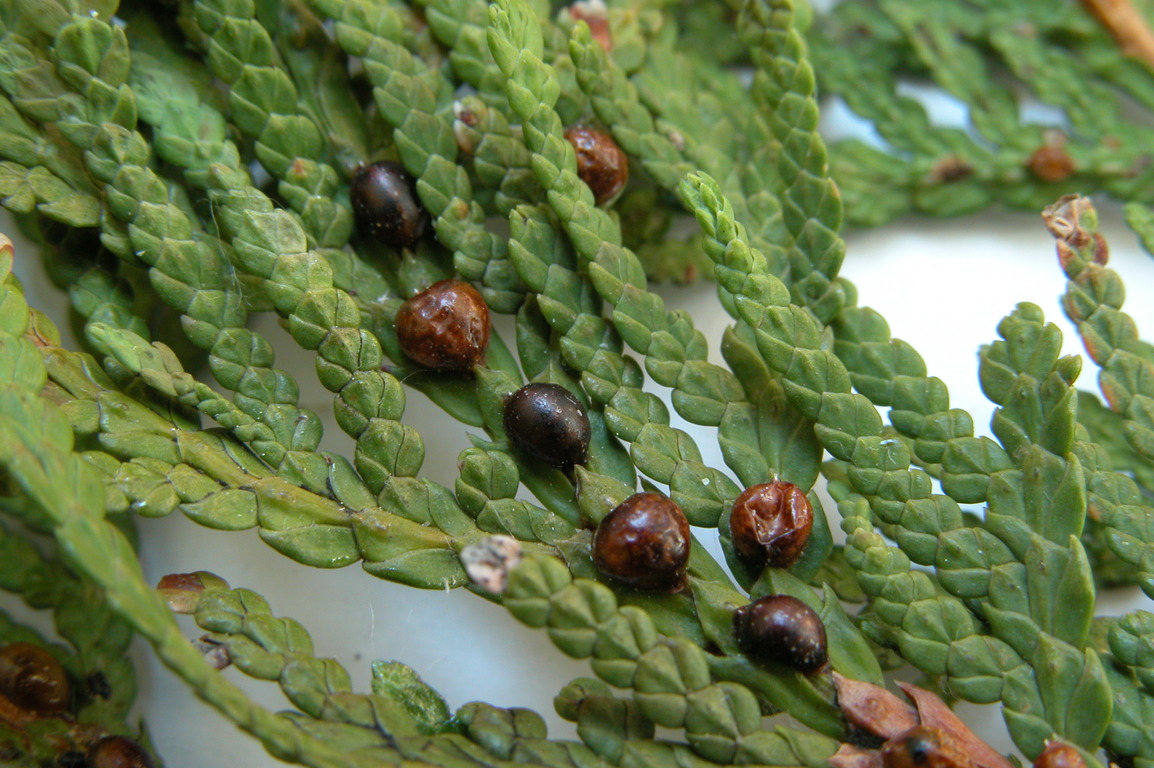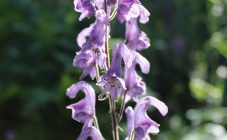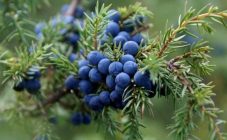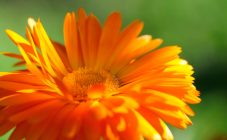Content:
Thuja is a coniferous tree, belongs to the Cypress family, capable of actively developing for more than 50 years. Not less than 200 years - that's how long thuja lives. At least 100 species of wild plants are known to exist.
About the same number of varieties are cultivated. Most of the trees are winter hardiness. Among the whole variety of varieties, there are trees that surprise with an interesting color color - on farmsteads you can see not only the usual green, but also blue and yellowish colors.
It is convenient to grow not only tall trees, but also in the form of shrubs. Some specimens belong to dwarf varieties, grow near the surface of the earth, and may have the shape of a small lush ball.
Why such a varietal variety, because they all look the same? Indeed, they look similar, but each species is unique in its own way and has its own characteristics. Further, what is thuja, what types exist, and what is their use.
Description of culture
For many, thuja species of which have been in parks for decades has long become familiar. At the same time, it is even difficult to imagine that wild varieties of thuja cannot be found in Russia, since the first plant was brought here several centuries ago. Thuja is a tree native to southeastern Canada and northern America. 20 meters is the maximum height, how much thuja grows in the wild conditions of the homeland. Cultivated varieties of thuja in Russia can reach a maximum of 10 meters in height.
If you look at the branches and needles, you can see a structure that looks like a thick spider web. The crown of trees is dense, consists of many shoots branched in one plane. The deciduous part of a young tree is needles. Most of the needles are directed upwards, placed crosswise in relation to each other. The coarse foliage of an adult tree has a scaly structure.
The Cypress family belongs to monoecious, gymnosperms. Thuja fruits are oval cones, oblong in shape. The cone is covered with paired scales. The upper part is sterile, in the rest there are no more than 3 ovules, which contain a flat narrow-winged seed. Seed ripening is possible already at 1 year-olds, after planting.
We must not forget about the fact that you can determine the health of a tree by looking at the appearance of the needles. Juicy, moisture-saturated needles always match the color of the crown - this is the first and, most likely, the main sign of plant health.Dry branches to the touch, their characteristic yellowish (sometimes brown) shade, lethargy and fragility of the needles are signs of problems, mostly due to a lack of moisture and minerals.
Trees of various types are used not only for the purpose of creating unique landscape design. Plants are used to decorate indoor and outdoor spaces. When placing trees in closed buildings, they need more careful maintenance, taking into account the need for the right amount of water and air temperature. For the winter period, such trees need a temperature without sharp drops of at least 8 and not higher than 12 degrees of mercury.
Thuja species and varieties of which are grown at home also have their own characteristics. The first step is to choose the right container in which the tree will grow and develop over the years. With further transplants, the size of such pots should increase by at least 1.5 times.
Varieties
To date, 5 species are known, into which the thuja is divided into their description further:
- Western, or tree of life. Some sources can interpret the name of the species as Thuja vulgaris. In the wild, it can only be found in North America. Due to characteristics such as longevity, resistance to frost, tolerance of polluted air, this type of plant is common for decorative purposes. Easily grown anywhere on the continent, regardless of climatic conditions.
The following are considered characteristic of the species:
- compactly assembled crown with bright green color;
- trunk wood of an unusual red color;
- small cones;
- winter is the time when the plant changes color from green to brown.
The tree of life loves moisture and does not tolerate shade. Depending on the variety, it can be a tree or a spherical standard bush. Wood of this type is lightweight, durable, and is highly resistant to decay processes. The tree contains essential oils, helps to cleanse the environment by releasing phytoncides. On the basis of the species, breeders have bred more than 100 varieties, including thuja on a trunk.
- Sichuan, or Chinese thuja - the name speaks of the birthplace of the tree. Does not like open sunlight, refers to shade-loving, it is better when planted in the shade of large trees. This thuja will not take root in Siberia, since its frost resistance is focused on the southern regions. The branch part is fan-shaped. The plant leaf and flower in the east are considered valuable materials that can be used in healing for the purpose of healing.
- Thuja Korean - has a spreading crown and branches. The color of the needles can vary from dark green in front and bright silver on the back. Designed for cultivation in the south. Poorly tolerates cold and frost.
- Japanese, or Tuya Standisha - at home can be found in the mixed forest belts of the high-mountainous areas of the islands. The height of a plant in nature can be at least 18 meters. Any soil is suitable for growing a tree, even alkaline. The color of the needles looks unusual, the top of which is green, the reverse side is white. There is a strong resinous smell of spruce.
- Giant, or Thuja folded - its habitat is the southern hemisphere, since the species does not develop well in cold conditions. When freezing, the shoots are able to recover.In its natural environment, it can grow up to 70 meters in length, with a trunk diameter of no more than 2 meters. Comparatively new varieties have a more compact form. The crown of the tree looks like a spiral. It differs from other varieties in a strong specific smell.
All varieties are characterized by an eternal green color, thuja can have only slightly different shades. In a larger mass, the needles are immune to frost and can be safely grown in a city, where everyone knows what a thuja looks like and what kind of tree it is. For some varieties, it may be necessary to additionally acidify the soil for normal development and growth, bringing the soil as close as possible to the natural environment.
Culture properties
Such products are actively used in the pharmaceutical and cosmetic industries. The composition of the needles is useful for the human body and is used in the treatment of many problems. The chemical composition of the oil is especially valuable:
- Tannins, which have astringent, anti-inflammatory, hemostatic and bactericidal properties;
- Sesquiterpene alcohol - expands the bronchi, eliminates cough reflexes, affects the nervous system;
- Thujon is a neurotropic poison, poisoning with which provokes hallucinations, convulsions of the limbs and damage to certain brain tissues. In moderate doses, poison is beneficial and even necessary for the body;
- Resin, thujic acids, tannin, ascorbic acid - all this is a good tonic, strengthens the immune system, eliminates microorganisms, promotes wound healing and pain relief.
About diseases and pests
Diseases of trees can be caused by the following dangerous pathogens:
- Various mushrooms belonging to the genus Fusarium;
- Cytospores;
- Schütte;
- Thomas, etc.
All of them harm the crown, destroy shoots and coniferous parts. To eliminate fungal pathogens, use a Bordeaux mixture or cartocin preparations. Plants are processed with the arrival of spring, repeating the procedure after 14 days, until the fungus is completely destroyed.
Using the fruit of the plant
The useful composition of thuja cones is often used in the complex treatment of the following disorders:
- malfunctions of the normal functioning of the genitourinary system;
- swelling and inflammation in the genitals of women;
- inflammation of cystitis;
- malfunctions of the gastrointestinal tract;
- colds, adenoids and other diseases of the ears, throat and nose;
- dental problems.
Thuja essential oils are considered to be an excellent diuretic and sweat-enhancing agent. Used to treat frigidity in women and erection problems in men. Ether is used as an expectorant and detoxifying agent and to normalize the psychoemotional health of patients.
In general, essential oils extracted from thuja cones are considered a universal remedy that has a positive effect on the body, when used in moderate doses and with some knowledge in this area.
